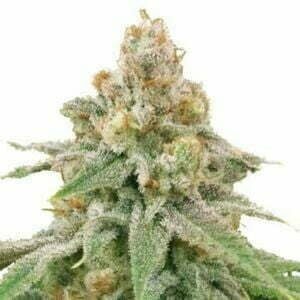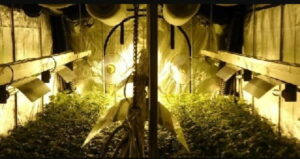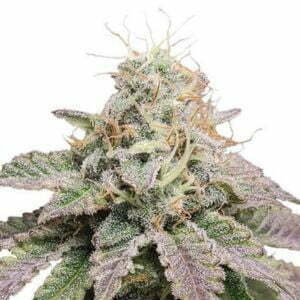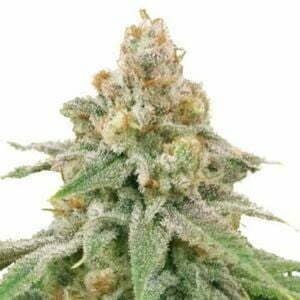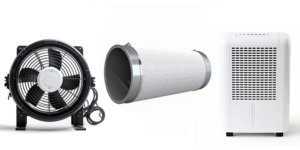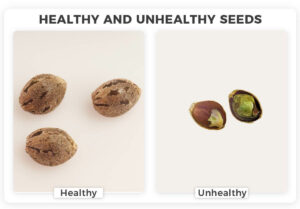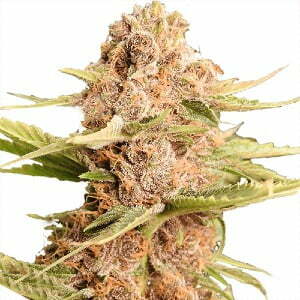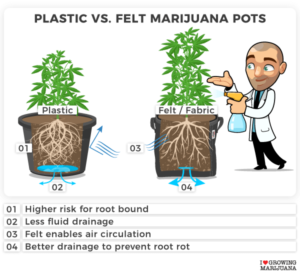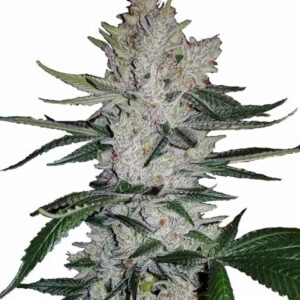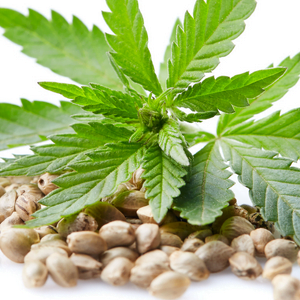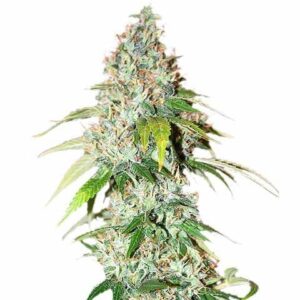Hot soil is a phrase that gets thrown around a lot in the cannabis community, but what does it mean? It does not refer to the temperature or the visual beauty of your medium. Instead, hot soil references an excess of nutrients and additives. This excess can create a range of different problems with your crop. Unfortunately, hot soil is a very common problem that beginners run into. So, let’s learn why soil can easily become hot and how you can fix it!
What is hot soil?
Hot soil refers to soil that is overly amended or fertilized, causing a variety of issues in one’s garden. Many beginners run into this problem because they are overzealous and end up giving their plants more fertilizer than they can metabolize; this phenomenon is also called “nutrient or ‘nute’ burn.” This can be caused by over-amending soil or feeding liquid fertilizers at too high of a concentration. You won’t be able to tell if the soil is hot by looking at it or feeling it, you will have to read your plants and look for symptoms that indicate the soil is too enriched for them.
What happens to cannabis plants when they’re overfed?
Cannabis plants will show signs of being overfed rather fast. Tip burn is the first sign that the medium is too hot for them. This visual symptom displays on the tips of the plant’s leaves. The tips will turn a yellow or brown color depending on the severity.
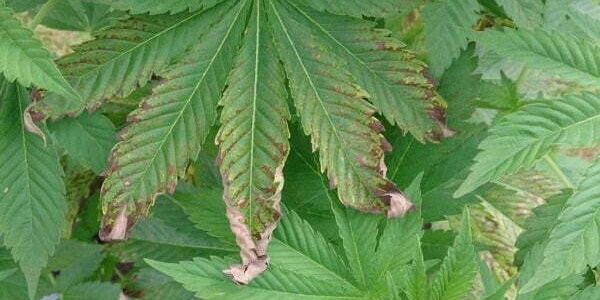

Another symptom of hot soil is seeing signs of nutrient deficiencies in your plants. It might seem counterintuitive that soil with too many nutrients will cause nutrient deficiencies, but it’s possible due to lockout. When there is too much of a certain nutrient, it prevents your plants from metabolizing other nutrients. An example of this would be an excess of calcium causing phosphorus-like deficiencies such as purpling of stems and yellow and brown spots on leaves.
There are many signs that your soil is too hot, and recognizing them is important. However, knowing how to fix it is equally as important.
How to fix hot soil
Fixing hot soil is relatively easy and should be done as soon as possible to prevent further damage to your plants. The easiest option is to water your plants heavily to wash the excess nutrients out of your medium. You should water till a large amount of runoff has bled out the bottom of your pot. Doing this type of flush weekly can help prevent the possibility of your soil becoming too hot, especially if you are using salt-based fertilizer.
If flushing with straight water isn’t solving the issue, try using different products that can aid in flushing the nutrients out. A simple product every grower should have is some kind of yucca extract. Yucca will make your water “wetter” to flush your medium out more efficiently and add other beneficial hormones to your plants.
Products containing enzymes will also help make your soil less hot because they will help break down nutrients and allow them to be flushed out of the medium. A more severe case of hot soil may require a more serious product, such as hypochlorous acid, to remove the excess nutrients.
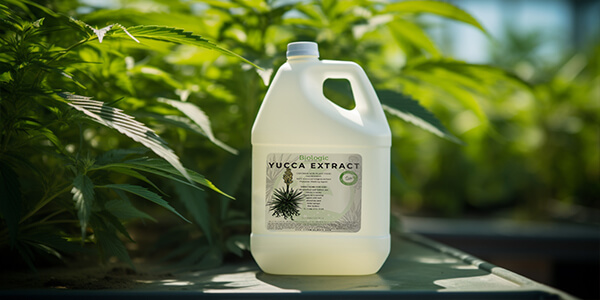

The best strategy to fix hot soil is being proactive and taking steps to prevent your soil from becoming too hot. Weekly flushes with plain water are a good insurance policy to prevent excess nutrients from building up. If you are using bottled nutrients, especially salt-based, use only the lowest recommended dilution rates at first to see how your plants respond. After that, slowly increase the concentration till you find the sweet spot.
The opposite of hot soil is kind soil?
There are many misconceptions about what makes a soil a super soil, living soil, kind soil, or a hot soil. A “Kind soil” is a hybrid of a super soil and living soil containing all the nutrition and microbiology to keep your plant healthy from veg through flowering. These soils are heavily amended before planting and contain a large amount of nutrition but not in excess like a hot soil.
However, keep in mind that if mixed improperly, a kind soil can become a hot soil by adding too many inputs when amending. To prevent this, carefully add amendments and do plenty of research to ensure you’re adding proper amounts of each input, or buy a pre-blended soil with a track record of success.


Cannabis Fertilizer
- Healthy plants = BIG yields
- Optimized recipe for each stage
- Strong plants from seed to bud
Conclusion
Hot soil is an issue that almost every cultivator has encountered at some point in their life. It’s easy to go overboard when fertilizing your plants, but, by watching your plants and learning how to identify the symptoms of over-fertilizing, you can prevent damage to your crop quickly. Staying proactive is always your best defense to preventing an issue in your garden, especially hot soil. Between weekly flushing and using products to help break down nutrients in your soil, you can keep your medium in peak condition.
Keep learning to keep your garden greener.
Spenser
- SEO Powered Content & PR Distribution. Get Amplified Today.
- PlatoData.Network Vertical Generative Ai. Empower Yourself. Access Here.
- PlatoAiStream. Web3 Intelligence. Knowledge Amplified. Access Here.
- PlatoESG. Automotive / EVs, Carbon, CleanTech, Energy, Environment, Solar, Waste Management. Access Here.
- PlatoHealth. Biotech and Clinical Trials Intelligence. Access Here.
- ChartPrime. Elevate your Trading Game with ChartPrime. Access Here.
- BlockOffsets. Modernizing Environmental Offset Ownership. Access Here.
- Source: https://www.ilovegrowingmarijuana.com/growing/hot-soil/
- :has
- :is
- :not
- $UP
- 1
- 300
- a
- Able
- About
- add
- adding
- additives
- After
- Aid
- All
- allow
- also
- always
- amendments
- amount
- amounts
- an
- and
- ARE
- around
- AS
- At
- BE
- Beauty
- because
- become
- becoming
- before
- Beginners
- being
- beneficial
- BEST
- between
- Big
- Bottom
- Break
- Building
- burn
- burned
- but
- buy
- by
- called
- CAN
- cannabis
- carefully
- case
- Cause
- caused
- causing
- certain
- Common
- concentration
- condition
- create
- crop
- damage
- Defense
- Depending
- different
- dilution
- displays
- do
- does
- doing
- done
- down
- due
- each
- easiest
- easily
- easy
- efficiently
- end
- enriched
- ensure
- equally
- especially
- Every
- example
- excess
- extract
- FAST
- feeding
- fertilizer
- Find
- First
- Fix
- Flushed
- For
- form
- from
- further
- Garden
- Giving
- Go
- good
- happens
- Have
- healthy
- heavily
- help
- High
- HOT
- How
- How To
- However
- HTTPS
- Hybrid
- identify
- if
- important
- in
- Increase
- indicate
- input
- inputs
- instead
- insurance
- into
- issue
- issues
- IT
- jpg
- Keep
- Kind
- Knowing
- large
- LEARN
- learning
- less
- Life
- like
- Liquid
- living
- lockout
- Look
- looking
- Lot
- lowest
- make
- MAKES
- many
- marijuana
- May..
- mean
- medium
- microbiology
- might
- mind
- misconceptions
- mixed
- more
- much
- nutrition
- of
- on
- only
- opposite
- Option
- or
- Other
- out
- overly
- overzealous
- Peak
- phenomenon
- Plain
- Planting
- plants
- plato
- Plato Data Intelligence
- PlatoData
- Plenty
- Point
- policy
- possibility
- possible
- pot
- prevent
- preventing
- prevents
- Proactive
- Problem
- Product
- Products
- proper
- quickly
- Rates
- rather
- Read
- recipe
- recognizing
- recommended
- record
- references
- refers
- relatively
- remove
- require
- research
- Respond
- Run
- see
- seed
- seeing
- seem
- serious
- severe
- should
- show
- sign
- Signs
- Simple
- Slowly
- So
- soil
- Solving
- some
- Soon
- Spot
- spots
- stems
- Steps
- straight
- Strategy
- success
- such
- Super
- sweet
- symptom
- Symptoms
- taking
- tell
- than
- that
- The
- their
- Them
- There.
- These
- they
- this
- Through
- till
- tip
- tips
- to
- too
- track
- try
- TURN
- type
- unfortunately
- use
- using
- variety
- very
- watching
- Water
- weekly
- What
- What is
- when
- why
- will
- with
- would
- yellow
- you
- Your
- zephyrnet

